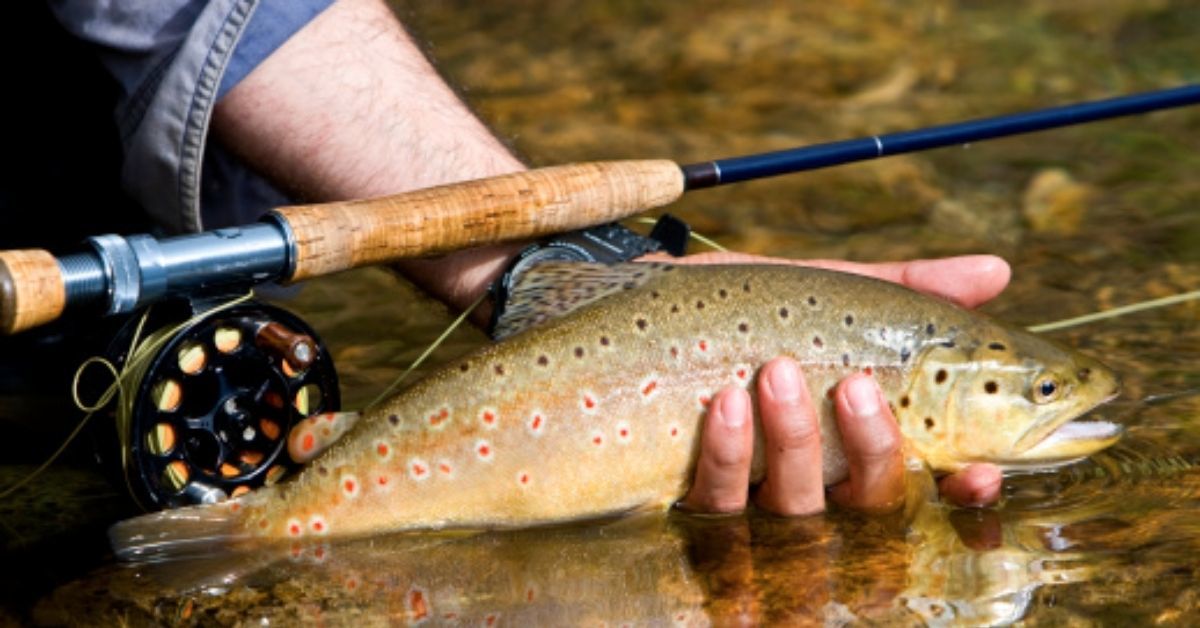There are a number of freshwater fish species that are commonly referred to as trout. These are closely related to the char and salmon species. Most trout like the lake trout are found in freshwater lakes, while there are some like the rainbow trout that may live in freshwater, or may sometimes spend a part of their lives, like 2 to 3 years by the sea and then go back to a location where there’s freshwater for them to spawn which is a common routine among salmons. A very interesting fact about trout is that they can have impressively different patterns and colors depending on the environments they live in. Based on their habitats, these colors and patterns serve as camouflage and may change as soon as the fish relocates to different environments.
Trout in the sea or those that have freshly come back from large water bodies like the sea can appear to be very shiny in color, while the same fish if it resides in a small lake or a stream could have some noticeable markings and more vivid colors. It is nearly impossible to determine a specific breed by a particular color pattern. However, in general, wild trout have more vivid patterns and colors. The young trout can be called troutling, troutlet, or sometimes fry. Trout are slightly full of bones, but their flesh is generally regarded to have a nice taste. The flavor and taste of the trout are mainly inclined by the nourishment of the fish.
For instance, trout that feed primarily on insects will be less tasty than those that feed on crustaceans. Trout fishing is a mainstream sort of fishing for some reason. Initially, trout is a fish that tastes incredible and is anything but difficult to prepare. Trout fishing is regularly done in beautiful nations by fishermen giving a calming domain. Trout fishing is likewise by and large best in cooler climates. Trout are additionally supplied by numerous state fish and wildlife organizations. The trout puts up a good fight when it is trapped with a line and hook. Due to how popular they are, trout are usually implanted into popularly fished waters after being raised on fish farms.
Farmed char and trout are sometimes commercially sold as fish food. Sometimes trout is also prepared by smoking it.
Types of Trout Fish & Trout fishing tips
Rainbow Trout and Steelhead – This is another species of salmonids, which are born in cold-water streams or rivers that are mostly located in North America and the Pacific Ocean in Asia. There are small dark spots scattered over the entire fish, including the tail, with slight to pronounced rainbow coloring. A steelhead is a rainbow trout that is found in the ocean.
Redband Trout – Redband trout looks a lot like rainbow trout, with a reddish-orange band of color along the sides. Redband trout are found in the conduits of Montana, Washington, Idaho, Oregon, California, and Nevada.
Cutthroat Trout – The cutthroat trout are native to western North America. There are red-orange slash marks on the underside of the lower jaw, although these may not be visible in bright sea-runs.
Golden Trout – The colorful golden trout is found in small streams connected to the Kern River located in California and also, in the Kern Plateau. They are known for their brilliant gold-yellow to deep red shading. Brilliant trout have an exuberant stripe of dark red along their lateral lines and clear white edges along with their fins.
Brown Trout – These are types of trout that were transported to North America from Europe several years back. They are, consequently, not local to any stream in the United States. The spots are huge, dark or red, regularly with a pale corona encompassing them, and missing from the tail.
Apache Trout – The Apache trout is Arizona’s state fish. It can be recognized by the shady olive color of its head and back, and the yellow-gold color on its belly.
Brook Trout – These types of trout are local to the waters of eastern and upper Midwestern the United States and Canada, and have been presented by individuals located somewhere else. They get a kick out of the chance to live in perfect, clear, spring-bolstered streams with numerous pools and riffles. There, they stow away under expansive rocks, in profound pools and close banks with overhanging trees and plants. There are prominent wavy “work trail” markings on the back and dorsal balance, with white driving edges on the lower blades, and dark red spots encompassed by a blue corona.
Lake Trout – This is a freshwater char that resides mostly in lakes within the northern part of North America. The body has irregular white or gray spots.
Bull Trout – Bull trout create their homes in the profound pools, chilly lakes, and streams in the mountains of western North America. They get their name from their wide, level heads and strangely largemouths. The spots on the body are orange to cream-colored with no blue halo.
